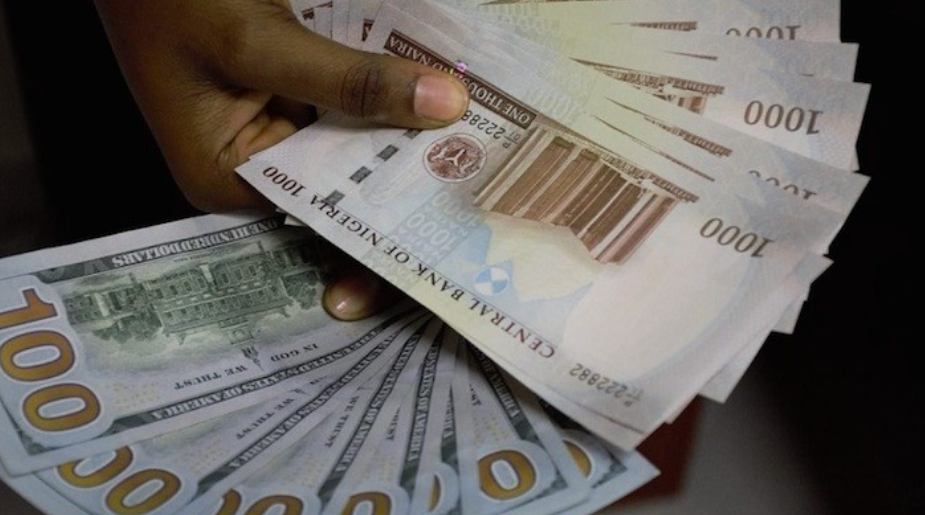
The Nigerian Naira (₦), once nearly at par with the US Dollar, has suffered severe depreciation over the decades.
From ₦0.658 to $1 in 1972 to a whooping ₦1,609 to $1 in 2025, the journey of the Naira reflects broader economic, political, and structural issues within Nigeria.
Below is a chronological look at how the Naira has depreciated over time, alongside the heads of government/presidents during each period, and the context that shaped each era.
1. 1972–1975: General Yakubu Gowon)
Exchange Rate: ₦0.658 – ₦0.61
In 1972, under General Yakubu Gowon’s military government, one US Dollar exchanged for just ₦0.658. The Naira was a strong currency, backed by oil boom revenues and stable foreign reserves. This strength continued through 1975 with only slight fluctuations.
2. 1976–1979: General Olusegun Obasanjo (Military)
Exchange Rate: ₦0.62 – ₦0.59)
Obasanjo inherited a stable economy, and during his military rule, the Naira hovered between ₦0.62 and ₦0.59 to the Dollar. Nigeria’s reliance on oil exports supported the local currency during this period of relative calm.
3. 1979–1983: President Shehu Shagari (Second Republic)
Exchange Rate: ₦0.55 – ₦0.72
By the time Shehu Shagari became Nigeria’s first democratically elected president since independence, the Naira had begun to lose its edge. From ₦0.55 in 1980, it rose to ₦0.72 by 1983. Declining oil prices, rising import dependency, and weak economic management contributed to this slow but steady fall.
4. 1984–1985: Major General Muhammadu Buhari (Military)
Exchange Rate: ₦0.76 – ₦0.89
Buhari’s military government adopted a strict economic stance. The exchange rate moved from ₦0.76 in 1984 to ₦0.89 in 1985. The country grappled with foreign exchange shortages, and import restrictions were heavily enforced to preserve national reserves.
5. 1985–1993: General Ibrahim Babangida (Military)
Exchange Rate: ₦2.02 – ₦21.90
Under Babangida, the Naira underwent its first major crash. In 1986, following the introduction of the IMF-backed Structural Adjustment Programme (SAP), the Naira was devalued to ₦2.02 per Dollar, sparking a sharp decline that continued for years. By the end of his tenure in 1993, it stood at ₦21.90. SAP policies aimed to liberalise the economy, but instead unleashed inflation and instability.
6. 1993–1998: General Sani Abacha (Military)
Exchange Rate: ₦21.90 – ₦84.70
The Abacha years were marked by sanctions and authoritarian rule, but also a managed exchange system that kept the official rate somewhat stable, even as parallel market rates soared. From ₦21.90 in 1993, the official rate hit ₦84.70 by 1998.
7. 1999–2007: President Olusegun Obasanjo (Democratic Era)
Exchange Rate: ₦90 – ₦125
With the return to democracy in 1999, Obasanjo’s government focused on economic reforms and debt relief. Still, the Naira continued to decline gradually from ₦90 in 1999 to ₦125 in 2007. While the administration attracted foreign investment, structural weaknesses in the economy remained.
8. 2007–2010: President Umaru Musa Yar’Adua
Exchange Rate: ₦120 – ₦154.80)
Yar’Adua’s brief time in office was shaped by global oil price fluctuations and internal unrest. The Naira weakened further to ₦154.80 in 2010, reflecting broader economic pressures.
9. 2010–2015: President Goodluck Jonathan
Exchange Rate: ₦165 – ₦300
During Jonathan’s presidency, the Naira experienced increased volatility due to a sharp drop in oil prices from 2014 onward. The currency plunged from ₦165 in 2011 to ₦300 by 2015, leading to inflation and foreign investment concerns.
10. 2015–2023: President Muhammadu Buhari
Exchange Rate: ₦300 – ₦460
In Buhari’s second stint as leader, Nigeria faced back-to-back recessions and foreign exchange crises. The Naira saw multiple devaluations, moving from ₦300 in 2015 to ₦460 in 2023. Government attempts to manage the rate through official and black-market systems only worsened confidence in the currency.
2023–2025: President Bola Ahmed Tinubu
Exchange Rate: ₦460 – ₦1,609)
In 2023, President Bola Tinubu implemented one of the most radical currency reforms in decades, floating the Naira to unify official and market exchange rates. This led to a swift and steep depreciation: ₦1,483 to $1 by 2024 and ₦1,609 to $1 by 2025. The reform aimed at attracting foreign investment and ending a long-standing subsidy system, but the Naira’s plunge reflects the backlog of unaddressed economic imbalances.
Over the past five decades, the Naira has collapsed from a position of strength to its weakest point in history. This trajectory reflects Nigeria’s persistent over-reliance on oil, inconsistent fiscal policies, limited industrial capacity, and weak institutional governance. Without structural reforms beyond currency adjustments, the Naira’s future may remain uncertain.


)
)
)
)



